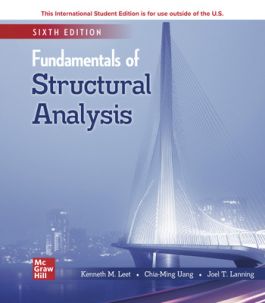Fundamentals of Structural Analysis ISE
After purchasing your eBook, login to the McGraw Hill Bookshelf website and redeem the access code from your order confirmation email.
- Access your eBook online or offline
- Easily highlight and take notes
- Fully searchable content
- Syncs across platforms
NOTE: eBook purchase does not include Connect homework or adaptive SmartBook assignments
1) Introduction
2) Design Loads and Structural Framing
3) Statics of Structures—Reactions
4) Trusses
5) Beams and Frames
6) Cables and Arches
7) Deflections of Beams and Frames
8) Work-Energy Methods for Computing Deflections
9) Analysis of Indeterminate Structures by the Flexibility Method
10) Analysis of Indeterminate Beams and Frames by the Slope-Deflection Method
11) Analysis of Indeterminate Beams and Frames by the Moment Distribution Method
12) Influence Lines for Moving Loads
13) Approximate Analysis of Indeterminate Structures
14) Introduction to the General Stiffness Method
15) Matrix Analysis of Trusses by the Direct Stiffness Method
16) Matrix Analysis of Beams and Frames by the Direct Stiffness Method
Appendix
Answers to Odd-Numbered Problems
Index

